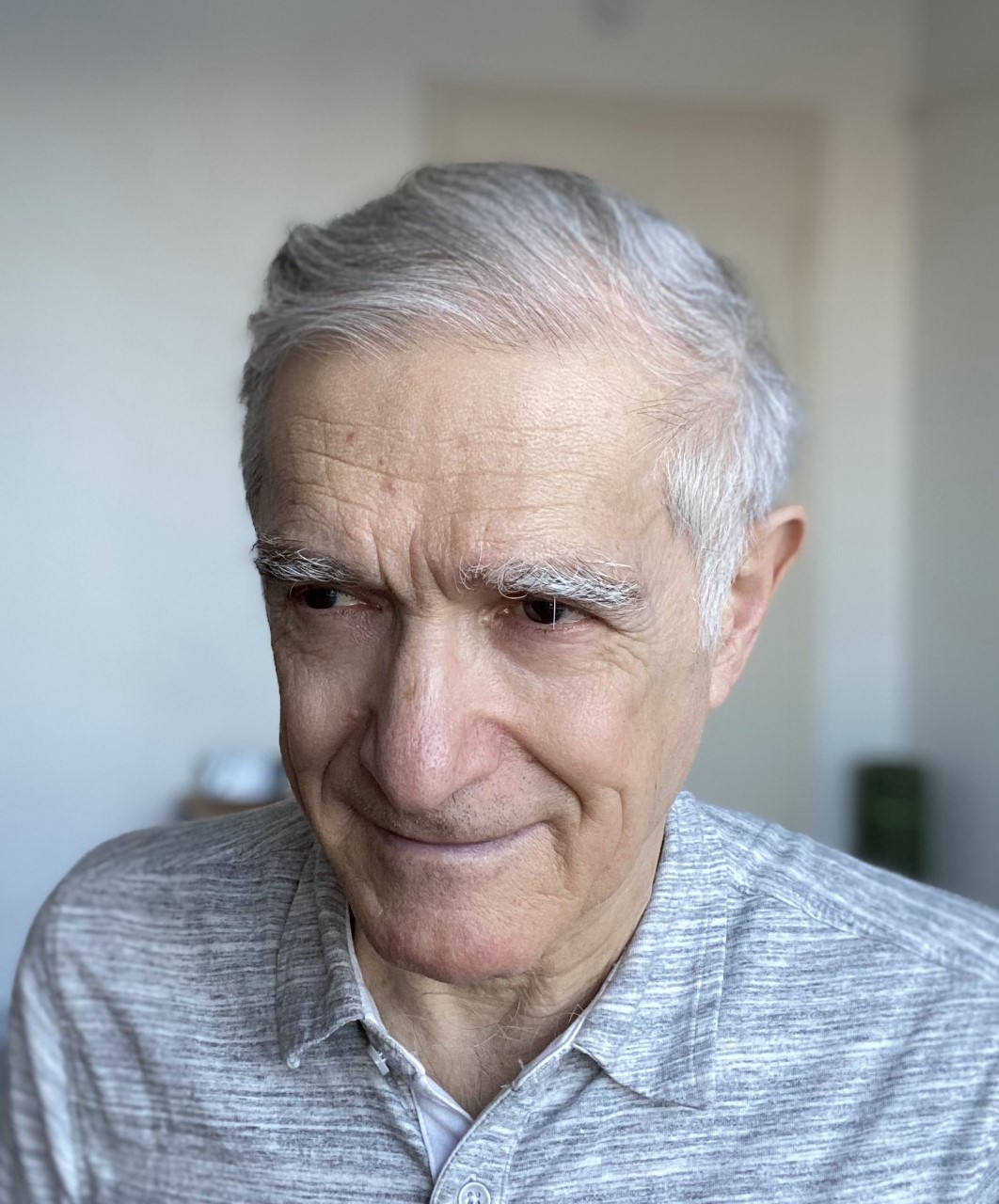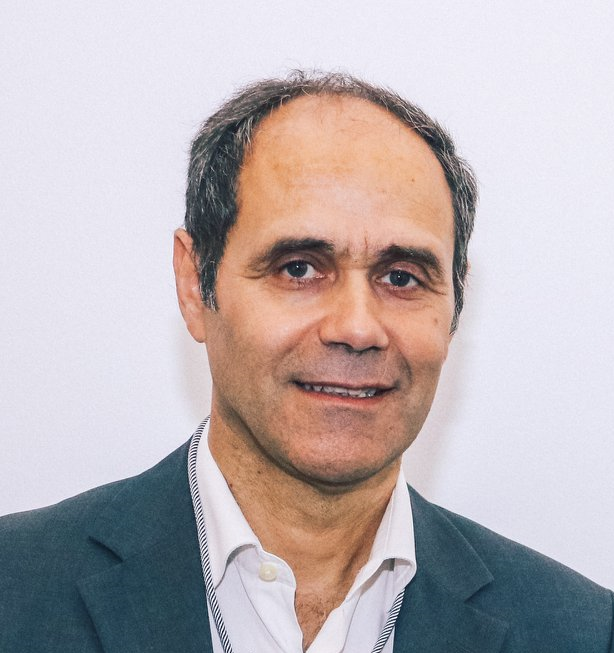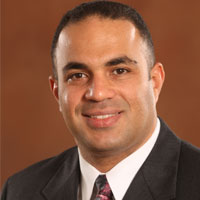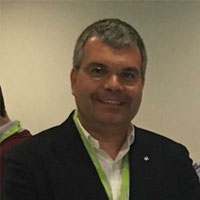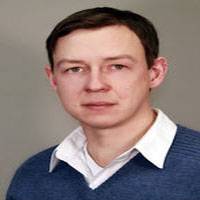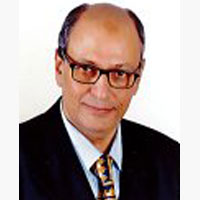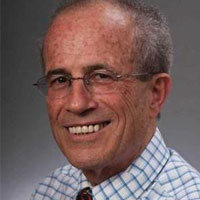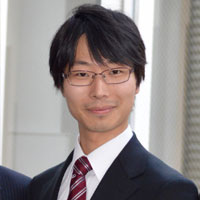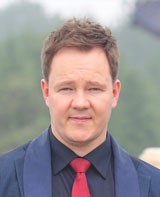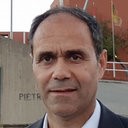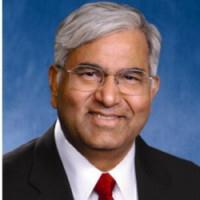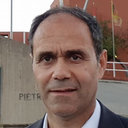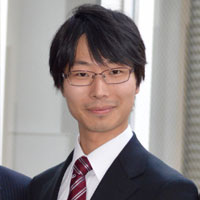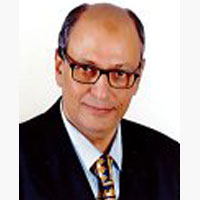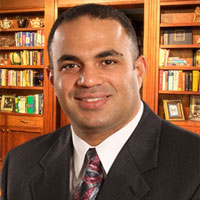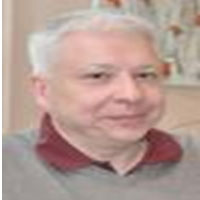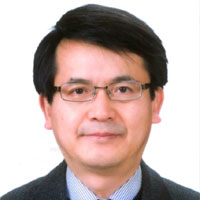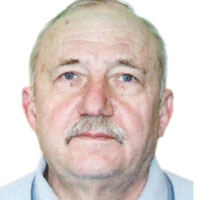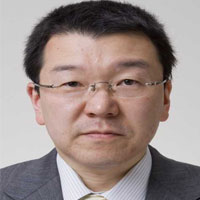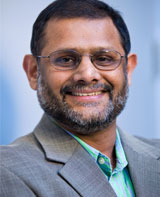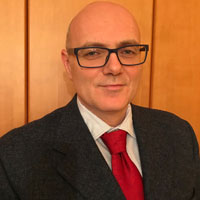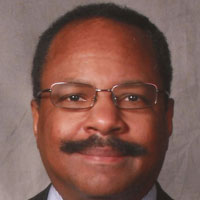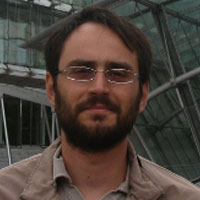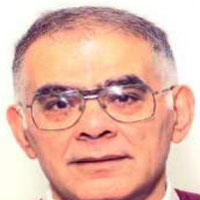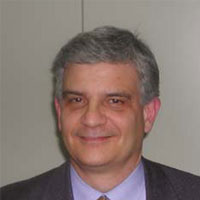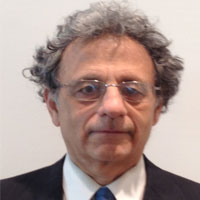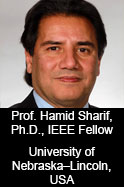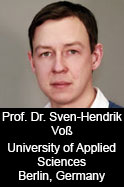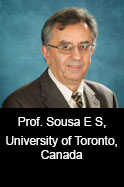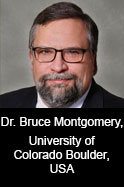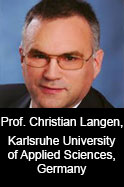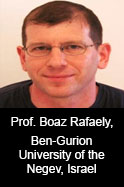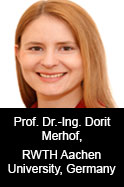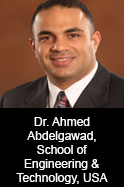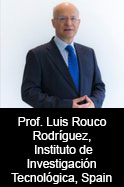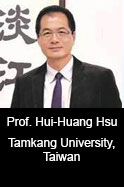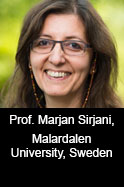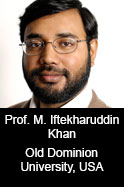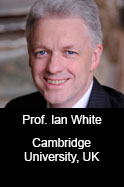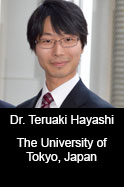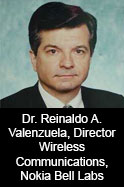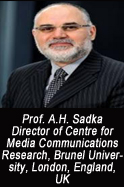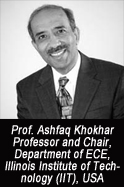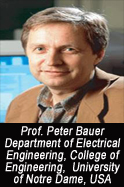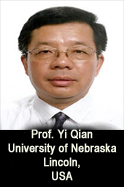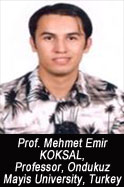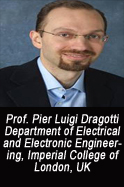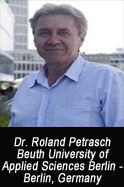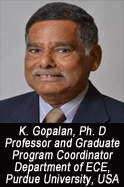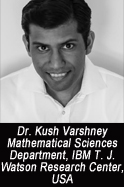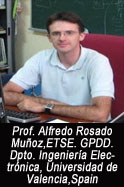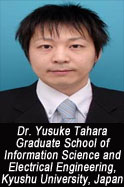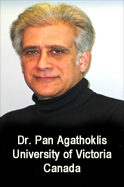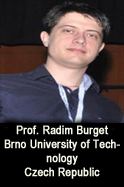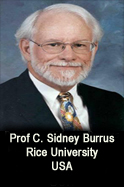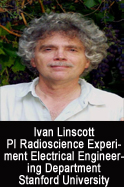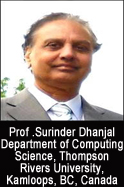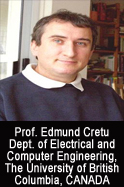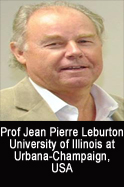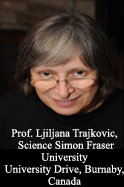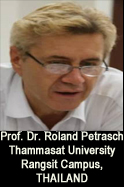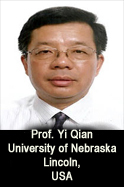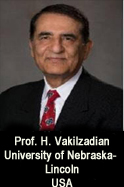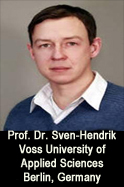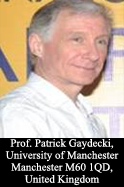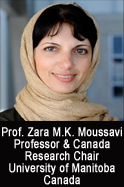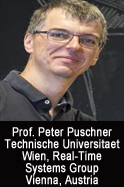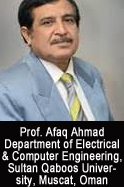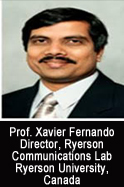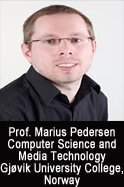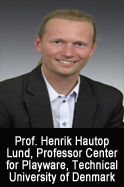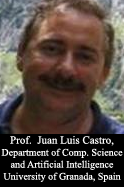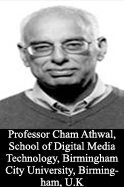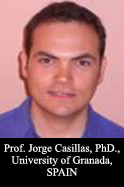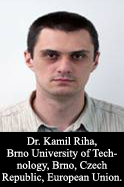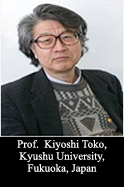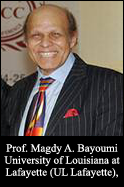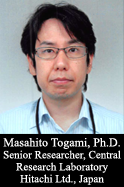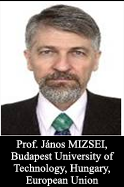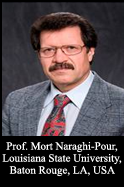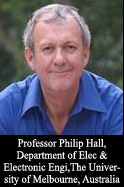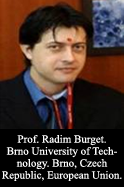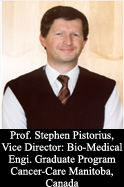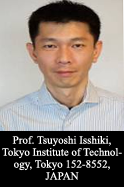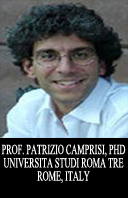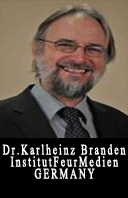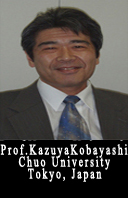Invited Talks
Invited talks of SPIN 2024

Speaker Dr Jon Jenkins
Title Improving Estimates of the Frequency of Earth-like Planets in the Habitable Zone of Sun-Like Stars by Reprocessing the Kepler Dataset
Abstract :
NASA is moving forward with the Habitable Worlds Observer (HWO) mission concept recommended by the 2020 Astrophysics Decadal Survey and slated for launch in the 2040s. HWO is expected to be a 6-m class IR/Op-cal/UV Observatory optimized for exoplanets and general astrophysics and one of the most powerful space-born observatories ever conceived. Its chief goal is to image ~25 planetary systems around Sun-like stars, including Earth-size exoplanets in their star’s habitable zone and characterize their atmospheric content. By measuring the spectra of these planets, HWO will search for biosignatures such as water, methane, oxygen and/or ozone. The success of HWO depends on η⊕, the expected number of Earth-size exoplanets orbiting in the habitable zone of a Sun-like star. This defines the distance out to which HWO needs to operate to achieve its goals, and thus its size and performance, which are the primary cost drivers. Current estimates of η⊕ have very large uncertainties, primarily due to the paucity of reliable Earth-size, rocky exoplanets in the habitable zone of Sunlike stars. The Kepler mission dataset will likely be the only high-quality data set available in time to inform HWO’s design. Since the end of the Kepler mission, a great deal has been learned about transit detection, the construction of exoplanet catalogs suitable for population studies, and the inference of η⊕ from such catalogs. Kepler data are better understood, and better approaches to photometry and systematic error correction have been developed. Most significantly, the Gaia mission has delivered vastly improved, high-precision stellar catalogs to better understand the stellar population observed by Kepler as well as the background stars around each target. Gaia will help to improve the quality and precision of Kepler data products and the sensitivity of the planet search, enabling the detection of more small exoplanets in the habitable zone of Sun-like stars. Our team was awarded a 5-year grant to develop an improved version of the Kepler pipeline and to reprocess all Kepler data, starting from the existing calibrated pixels and ending with a new exoplanet catalog and η⊕ computation. Our pipeline will be open source, written in java and python, leveraging existing software whenever possible,and designed for wide use with general transit data. We hope to encourage community efforts to explore complementary techniques and technologies to this effort by developing the code in the open to achieve the best estimates for η⊕ and thus, the best design requirements for HWO.
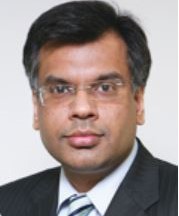
Speaker Dr. Vivek Lall,
Title
Abstract :
.
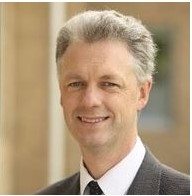
Speaker Dr Ian White
Title Ultrahigh Performance RFID detection, location and flow using Advanced Signal Processing
Abstract :
This paper will review the development of a unique wide area and error free battery free radio frequency identification (RFID) interrogation system using multiple antennas working in cooperation to provide high quality coverage. The use of multiple interrogation RF beams greatly improves multiple tag identification performance over wide areas of up to 10 x 10 m using a single RFID reader. Read accuracies of > 99% are achieved for tag detection and for tag direction of movement. Recently location performance to 3 x 3 m has been achieved with > 98% read accuracies over a 2,000 square meters area with multiple RFID readers. In addition, read rates in excess of 500 tags/s are achieved. The paper will discuss application areas in logistics, healthcare and retail and potential future directions for the field.
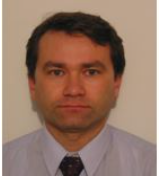
Speaker Dr Zeljko Zilic
Title Blockchain Tokens for Universal Encrypted Access: A System for Healthcare Information Networks
Abstract :
The digitization of healthcare, driven by technological advancements and the digitization of medical records, presents both opportunities and challenges in secure and efficient medical data management. Key concerns revolve around data security, privacy, and accessibility, particularly in the centralized nature of existing systems. Blockchain technology has emerged as a promising solution, offering a decentralized and transparent framework for data exchange and management. However, the interoperability of multiple blockchain-based healthcare networks presents a new challenge, limiting their effective utilization in the healthcare sector. Inadequate data management across different blockchain systems can lead to duplications, inconsistencies, and inefficiencies, putting patient record privacy and security at risk. To tackle these challenges, this thesis proposes a novel approach by introducing blockchain tokens as a universal encrypted access system, facilitating the seamless transfer of patients' medical data across various blockchain-based healthcare networks. Assigning a unique token to each patient addresses the issues of data fragmentation and lack of interoperability that impede blockchain adoption in healthcare. To achieve universal access using tokens, our solution leverages distributed storage systems (DSS), employs steganography and integrates cryptographic techniques. DSS eliminates centralized storage of sensitive medical data, preventing a single point of failure. To protect against the public nature of DSS and the NFT metadata, steganography protects data unique identifiers and sensitive metadata, granting access only to authorized parties. Information is further secured with a strong password when embedded within an image, serving as an NFT image for simplified data retrieval during patient transitions. Cryptographic techniques secure password transfer during patient mobility across networks. Our model leverages the mutability of NFT data to introduce "updatable patient-specific NFTs" for accommodating dynamic medical data while using the immutability of NFT data to establish an ownership mechanism for patients that ensures privacy, uniqueness, and a trusted sharable protocol. This approach seamlessly integrates new patient records in real time on the public blockchain. To evaluate the feasibility, a scoping study is conducted using a medical test network to explore Hyperledger blockchain capabilities in healthcare records management (HRM). Building on insights gained, the scope expanded to two blockchain medical networks, engaging multiple institutions in implementing and testing the integration of medical records on IPFS within the private blockchain network via updatable NFTs on a public blockchain. Performance analysis confirms feasibility and effectiveness and validates practical application potential.

Speaker Dr. Hien Quoc Ngo
Title Virtually Full-Duplex Cell-Free Massive MIMO for 6G
Abstract :
Cell-free massive multiple-input multiple-output (MIMO) is a system where many (hundreds or thousands) access points or base stations coherently serve many (tens or hundreds) users. Different from the current cellular (mobile) networks where the coverage area is divided into cells, in cell-free massive MIMO, there are no cells or cell boundaries. Cell-free massive MIMO is expected to overcome the boundary effect--the inherent limitation of the current cellular networks which persists over the last 50 years. It is expected to ensure everything and everywhere get connected, and hence, fulfils the key requirements of next generation wireless communication systems (beyond 5G and towards 6G). In this talk, we will first focus on the fundamentals as well as signal processing designs for virtually full-duplex cell-free massive MIMO where full-duplex transmission is virtually realized via half-duplex hardware devices. A range of important topics and future directions will be then discussed.

Speaker Dr. Nicholas D. Lane
Title Machine Learning and the Data Center: A Dangerous Dead End
Abstract :
The vast majority of machine learning (ML) occurs today in a data center. But there is a very real possibility that in the (near?) future, we will view this situation similarly to how we now view lead paint, fossil fuels and asbestos: a technological means to an end, that was used for a time because, at that stage, we did not have viable alternatives – and we did not fully appreciate the negative externalities that were being caused. Awareness of the unwanted side effects of the current ML data center centric paradigm is building. It couples to ML an alarming carbon footprint, a reliance on biased close-world datasets, serious risks to user privacy – and promotes centralized control by large organizations due to the assumed extreme compute resources. In this talk, I will offer a sketch of preliminary thoughts regarding how a data center free future for ML might come about, and also describe how some of our recent research results and system solutions (including the Flower framework -- http://flower.dev) might offer a foundation along this path.
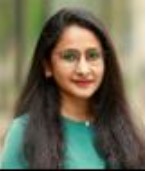
Speaker Dr. Gaurangi Gupta
Title Innovative Antennas for Satellite Telecom, Radar Systems and Radio Telescope
Abstract :
The talk discusses the innovative antennas being developed for various telecom, radar and radio telescope applications. A 350 m diameter reflector antenna is being developed as a detector for the Lunar Crater Radio Telescope Once deployed, it will be one of the largest filled aperture telescopes The RF design and development thus involve complexities in terms of structural constraints and environmental interactions, which will be discussed in the talk. All metal circularly polarized patch excited cup antenna arrays being developed for direct to Earth communication from the potential Europa Lander and for Lunar missions These antennas project the capability to survive high power levels, cryogenic temperature and high radiation on the Europa and Lunar surface. All metal meta-surface antennas have been designed for Ku band ice sounding radar and W-band radiometer. These antennas form an integral part of the development for future space missions. High gain Ka-band reflector antennas with feed clusters are being developed for the INCUS Earth Science Mission Radar. Based on the overlap and gain requirements, unique feed and waveguide routing has been developed using additive manufacturing, which will also be discussed as part of the talk.
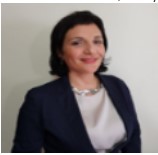
Speaker Dr Annalisa Bruno
Title Vacuum processed Perovskites for Optoelectronic Devices
Abstract :
Metal-halide perovskites made a breakthrough in photovoltaic and light-emitting technologies in the last ten years. MHPs are one of the most promising low-cost materials, due to their excellent optoelectronic properties and fabrication versatility. Since the advent of the first perovskite solar cells (PSCs) in 2009, their power conversion efficiency (PCE) has now reached 25.6% [1], for active areas smaller than 1 cm2 and their operational stability is constantly improving [2-4]. The interest in transferring the existing technology into large-area perovskite modules using industrial-compatible techniques is exploding. In this talk, I will show why thermal evaporation is a promising perovskite fabrication technique to bring this technology closer to reliable and extended production, by relying on excellent size scalability, promising stability, fine composition control, and surface adaptability [5]. The co-evaporated perovskite thin ?lms are uniform over large areas with low surface roughness and a long carrier lifetime. I will present our highly ef?cient, large area, PSCs where the MAPbI3 perovskite is deposited by thermal co-evaporation. Developing optimization strategies customized for n.i.p [6, 7] and p.i.n [8] architectures the PSCs achieved PCEs above 20% in both configurations. Moreover, the co-evaporated MAPbI3is formed intrinsically strain-free and the PSCs showed remarkable structural robustness and impressive thermal maintaining over ≈80% of their initial PCE after 3600 under continuous thermal aging at 85 °C without encapsulation [9].
References
1. J. Avila et al., Joule 2017, 2, 431; F, Kosaisih et al., Joule 2022,12, 2692; Y. Vaynzof, Adv. Energy Mat. 2020, 10, 2003073
2. J. Li et al., Joule 2020, 4, 1035
3. H.A. Dewi et al., Sust. Energy & Fuels. 2022, 6, 2428
4. E. Erdenebileg, et al Solar RRL, 2022, 6, 2100842
5. H.A. Dewi, et al., Adv. Funct. Mater. 2021, 11, 2100557
6. J. Li et al., Adv. Funct. Mater. 2021, 11, 2103252
7. E. Erdenebileg et al., Material Today Chemistry, 2023, 30, 101575
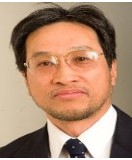
Speaker Dr. Thuy Le
Title
Abstract :
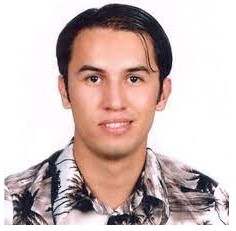
Speaker Dr. M. Emir Koksal
Title Fractional Order Calculus and PID Control
Abstract :
The subject of fractional calculus has become very famous and popular in the last few decades. This is because fractional-order models simulate characteristics of real systems better than integer-order models. Hence, fractional calculus is being used as a powerful and important tool for defining, investigating, analyzing, solving, and understanding many different types of chemicals, engineering, mathematical, physical, statistical, and social problems in real life. In this lecture, Basic concepts of fractional calculus and several popular definitions of fractional integration and differentiation are introduced. Various applications in science and engineering are mentioned. In particular, the design of fractional-order PID controllers are emphasized.
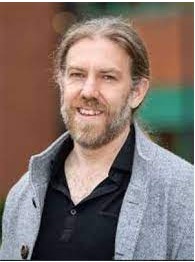
Speaker Dr. Ken Duffy
Title Next Generation Error Correction
Abstract :
Shannon's 1948 opus identified the minimum amount of redundancy that needs to be added to a communication in order to enable reliable reception. Since then, the paradigm has been to co-design restricted classes of algebraically constructed forward error correction codes with code-specific decoding algorithms.
In this talk, we introduce a new forward for error correction decoding that opens up a much broader spectrum of application- and hardware-friendly possibilities. This talk is based on work in collaboration with Muriel Medard (MIT), Rabia Yazicigil (BU) and their groups.
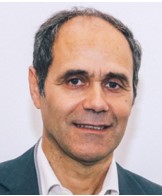
Speaker Dr Álvaro Rocha
Title Dimensions of Assessing the Quality of Peer Review Reports of Scientific Articles
Abstract :
Assuring the quality control of publications in the scientific literature is one of the main challenges of the peer review process. Consequently, there has been an increasing demand for computing solutions that will help to maintain the quality of this process. Recently, the use of Artificial Intelligence techniques has been highlighted, applied in the detection of plagiarism, bias, among other functions. The assessment of the reviewer’s review has also been considered as important in the process, but little is known about it, for instance, which techniques have been applied in this assessment or which criteria have been assessed. Therefore, a systematic literature review was made to find evidence regarding the computational approaches that have been used to evaluate reviewers' reports. To achieve this, five online databases were selected, from which 72 articles were identified that met the inclusion criteria of this review, all of which have been published since 2000. The result returned 10 relevant studies meeting the evaluation requirements of scientific article reviews. The review revealed that mechanisms to rank review reports according to a score, as well as the word analysis, are the most common tools, and that there is no consensus on quality criteria. The systematic literature review has shown that reviewers’ report assessment is a valid tool for maintaining quality throughout the process. However, it still needs to be further developed if it is to be used as a resource which surpasses a single conference or journal, making the peer review process more rigorous and less based on random choice.
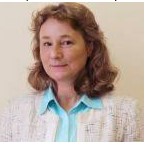
Speaker Dr Lyudmila Mihaylova
Title Gaussian Process Methods for Object Detection, Tracking and Sensor Scheduling with Uncertainty Qualification
Abstract :
Sensor networks generate massive amounts of data. These are often comprised of sensors with different modalities such as radar, acoustic sensors, LIDAR, combined with optical and thermal cameras. Moreover, data arrives with different time rates and levels of accuracy. Making sense of such multiple heterogeneous data is a challenging task that has been extensively studied, but the provision of reliable solutions for autonomous and semi-autonomous systems is a task that remains only partially solved. Fusion of data from multiple heterogeneous sensors of this type is part of the challenge; even more so when the autonomous decisions have to be performed in sequentially and in real-time. Capturing confidence and uncertainty from the integration of heterogeneous large-scale data remains a challenging task.
This talk will present recently developed Gaussian process methods for object detection, tracking and sensor scheduling. Both centralised and decentralised methods will be presented. The power of the methods is especially when dealing with different uncertainties in the sensor data and quantifying their impact on the developed solutions. These can be part of safe and reliable autonomy at different levels.
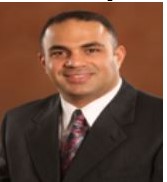
Speaker Dr Ahmed Abdelgawad
Title Build Your-Own-IoT-Architecture
Abstract :
Internet of Things (IoT) is the network of physical objects or “things” embedded with electronics, software, sensors, and network connectivity. It enables the objects to collect, share, and analyze data. The IoT has become an integral part of our daily lives through applications such as public safety, intelligent tracking in transportation, industrial wireless automation, personal health monitoring, and health care for the aged community. IoT is one of the latest technologies that will change our lifestyle in the coming years. Experts estimate that as of now, there are 23 billion connected devices, and by 2020 it would reach 30 billion devices. This talk aims to introduce the design and implementation of IoT signal processing systems. The foundations of IoT will be discussed throughout real applications. Challenges and constraints for future research in IoT will be discussed. In addition, research opportunities and collaboration will be offered for the attendees

Speaker Dr. Peter H. J. Chong
Title Fuzzy based Fall Risk Prediction in Older Adult’s.
Abstract :
The global elderly population is increasing rapidly, leading to a rise in chronic illnesses and co-existing conditions, which in turn results in higher healthcare expenses. Accidental falls are among the leading causes of injury-related deaths in elderly individuals. This study aims to create a real-time monitoring system using vital signs to foresee a future fall in older adults by identifying abnormalities through continuous monitoring. The proposed fall prediction technique, employing the Fuzzy-based Fall Prediction Algorithm, utilizes Fuzzy rules to learn and execute tasks. The obtained results are then classified according to different levels of predicted risk indicators. The developed model is tested using data from older adults sourced from a public repository and compared with the results of the theoretical evaluation. The simulated outcomes demonstrate that the proposed algorithm achieves 96% accuracy, 93.75% sensitivity, and 100% specificity. Utilizing these advancements in the proposed heterogeneous technology allows for the early prediction of falls in the elderly and can potentially save lives.
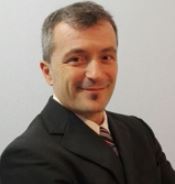
Speaker Dr. Carlos M. Travieso-Gonzále
Title Image Analysis for Affective Computing: More Than Just Pixels
Abstract :
Image analysis for affective computing is a rapidly growing field that seeks to understand and interpret human emotions from images. This involves the use of computer vision and machine learning techniques to extract features from images, such as facial expressions, body language, and physiological signals, which can be used to infer emotional states.Affective computing can revolutionize the way we interact with computers and the world around us. It can be used to develop more natural and engaging user interfaces, improve the accuracy of emotion recognition in social networks and other online interactions, and provide new insights into human behavior.
This article presents an overview of image analysis for affective computing. First, the basic principles of affective computing and image analysis are discussed. Next, the concept of emotion recognition from images is reviewed, including facial expression recognition, body language analysis, and physiological signal processing. Finally, the challenges and opportunities for future research in this field for neurodegenerative diseases are discussed.

Speaker Dr. Tobias Fischer
Title Advancements in Visual Place Recognition: From Loop Closure to Localization and Beyond
Abstract :
In this presentation, I will explore the evolving landscape of Visual Place Recognition (VPR), a critical component in robotics that allows machines to recognize previously visited locations based solely on visual data. While early applications were largely confined to loop closure in Simultaneous Localization and Mapping (SLAM), the utility of VPR is now being extended to localization-only pipelines where a pre-existing map is available.
Key Highlights include:
- Event-Based Sensing and Processing: I will focus on innovative methods utilizing event cameras and spiking neural networks for enhanced VPR capabilities.
- State-of-the-Art Methods: An introduction to ground-breaking techniques that are redefining VPR, including our award-winning method, Patch-NetVLAD.
- RoboStack: RoboStack is a versatile tool for running the Robot Operating System (ROS) across multiple operating systems while integrating the latest packages in machine learning, computer vision, and robotics.
- If time permits, I will provide an overview of recent developments in ecological applications, such as seagrass and coral reef segmentation.

Speaker Dr Andreas Savakis
Title Continual Adaptation in Gradually Changing Environments
Abstract :
As deep learning models get deployed in the real world, they encounter a new set of challenges including robustness, generalization and adaptation. The performance of classification models degrades significantly when operating in new environments with different distributions compared to the training data. Domain Adaptation (DA) aims to overcome the dataset bias problem by closing the gap in classification performance between the source domain used for training and the target domain where testing takes place. We present a new framework for Continual Domain Adaptation, where the target domain samples are acquired in small batches over time and adaptation takes place continually in gradually changing environments. Our Continual Domain Adaptation approach utilizes concepts from both DA and continual learning and achieves state-of-the-art results on various datasets under challenging conditions.

Speaker Dr Justin Dauwels
Title Perception error modelling for autonomous driving
Abstract :
Even though virtual testing of Autonomous Vehicles (AVs) has been well recognized as essential for safety assessment, AV simulators are still undergoing active development. One particular challenge is the problem of including the Sensing and Perception (S&P) subsystem into the virtual simulation loop in an efficient and effective manner. In this article, we define Perception Error Models (PEM), a virtual simulation component that can enable the analysis of the impact of perception errors on AV safety, without the need to model the sensors themselves. In this talk, we propose a generalized data-driven procedure towards parametric modeling , and we demonstrate the usefulness of PEM-based virtual tests, by evaluating camera, LiDAR, and camera-LiDAR setups. Our virtual tests highlight limitations in the current evaluation metrics, and the proposed approach can help study the impact of perception errors on AV safety.

Speaker Dr. Abhinav Valada
Title Brain over Brawn: Rethinking Robot Learning for Autonomy at Scale
Abstract :
A long-standing vision has been to create intelligent robots capable of learning from the world around them to assist humans in everyday tasks from domestic chores to transportation. However, most robots deployed today are still tailored for specific tasks and environments, avoiding contact with humans. Although the past decade has witnessed unprecedented advances in machine learning techniques for various autonomy tasks, they have increased the dependency on manually annotated labels or reward engineering, which are both environment- and task-specific. Moreover, as different robots have different hardware configurations (e.g., sensor modalities, viewpoints, locomotion), the transferability of these learned autonomy modules has become even more challenging. To achieve our goal of ubiquitous robots, we need to develop learning methods for robot autonomy that generalize effectively across diverse tasks, robots, and unstructured environments. In this talk, I will present our efforts in alleviating the aforementioned challenges in service robots ranging from autonomous vehicles to mobile manipulators. Specifically, I will discuss three fundamental aspects of learning autonomy at scale: 1) learning multiple diverse tasks simultaneously by sharing knowledge and exploiting complementary cues, 2) learning to adapt tasks across different robots and environments, and 3) learning efficiently with minimal human supervision. These techniques have not only facilitated setting the new state-of-the-art, they have opened doors to a wide variety of new applications in human-centered environments. Lastly, I will conclude the talk by presenting our ongoing efforts to address fairness in robot learning for ensuring safe, trustworthy, and responsible innovation, which is crucial for both scalability and fostering acceptance in society.
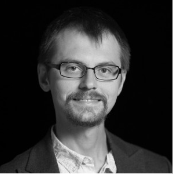
Speaker Dr. Adam Narbudowicz
Title Antenna arrays of sub-wavelength size for beamforming and localization within limited volume
Abstract :
Traditionally, the beamforming and angle of arrival estimation are performed with large antenna arrays, where antennas are separated by l/2 distance. However, this approach does not allow for antenna miniaturisation, as larger aperture size is required for better angular resolution. In this talk, a new approach is proposed, which relies on direct spherical-mode beamforming; It generates a number of omnidirectional spherical modes, with each mode exhibiting an intrinsic phase-variation across its radiation pattern. Since each mode is by definition orthogonal, it can be independently controlled. Therefore, by applying appropriate phase shift, an unidirectional beam can be created. Overall, the proposed antennas have total diameter between 0.6 – 0.76 l wavelength, which respectively offer size reduction of 70 – 60% as compared to linear arrays, with Angle-of-arrival resolution outperforming their larger counterparts.
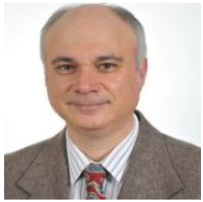
Speaker Dr. Jacob Scharcanski
Title Stochastic Texture Measurement and Analysis with Applications
Abstract :
In this talk, we address the problem of capturing useful information and measurements from stochastic textures. We also outline some of the challenges of this area, as well as the techniques proposed to approach them. In order to illustrate this presentation, some applications are discussed, focusing in areas such as agriculture, soil sciences, porous media, and pulp and paper.

Speaker Dr. Angela Amphawan
Title Spatial Modes: Increasing the Capacity of Future Networks
Abstract :
Internet-of-Things is revolutionizing industries and gaining prevalence in our data-driven society. A recent paradigm in optical networks is the utilization of spatial eigenmodes as an additional attribute for increasing the data-carrying capacity of an Internet-of-Things system. In space division multiplexing, various devices, few mode Fibers, and intelligent algorithms are designed for transmitting several data streams independently using spatial modes. The keynote addresses challenges and opportunities in space division multiplexing for future networks.
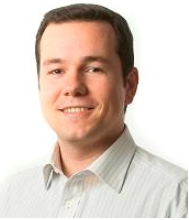
Speaker Dr. Miguel López-Benítez
Title Achieving Extreme Link Reliability for xURLLC Services in 6G Networks
Abstract :
There is an urgent need to support extremely ultra-reliable connectivity in 5G/6G emerging applications such as Industry 5.0, intelligent transportation systems, tactile Internet, remote healthcare, mission-critical services and ad-hoc disaster/emergency relief, among others. The demanding requirements set in terms of connection reliability for such applications make the wireless access design very challenging in terms of protocols and associated transmission techniques. In this context, this talk will provide a brief overview of the 5G/6G use cases, with a special emphasis on extreme Ultra-Reliable Low-Latency Communication (xURLLC), and will introduce a novel technique specifically devised to improve the link reliability for 5G/6G services based on an hybrid transmission scheme with adaptive diversity combining that dynamically switches between sub-6GHz/mmWave/THz bands to exploit their complementary characteristics. This novel scheme can achieve the same level of reliability as a continuous dual-link transmission scheme but with a much lower level of link usage and without sacrificing (and indeed enhancing) the capacity, thus making it a suitable candidate to deliver xURLLC services in a resource-efficient manner.
Invited talks of SPIN 2023
Speaker Dr. Vivek Lall, General Atomics Global Corporation, USA
Title
Abstract :
-
Speaker Dr. Muriel Medard,Massachusetts Institute of Technology Cambridge, USA
Title Universal decoding - revisiting the need for standardization in error-correcting codes
Abstract :
While 5G has provided some notable successes in introducing new technologies, such as millimeter wave and adoption of massive multi-input multi-output (MIMO), many of the above desiderata have been pushed at this stage to 6G. The causes of these unrealized ambitions are varied, but much can be attributed to the fact that the architecture of 5G remains patterned after previous generations, an overlay of many quasi-sedimentary layers of successive legacies, from conventional suboptimal modulations, to interleaving over channels, to being limited to a small number of long-and low-rate physical layer codes such as LDPCs, to hybrid ARQ and ARQ repetition at the MAC and transport layers. 5G has often resorted to increasing bandwidth to mask the inefficiencies of these legacy issues by running systems in fast forward.
Speaker Dr. Peter H. J. Chong, Auckland University of Technology, NewZealand
Title A Joint Physical-Layer Network Coding Based Medium Access Control
Abstract :
Vehicular network plays a crucial role in intelligent transportation system. It can provide road safety by broadcasting Basic safety message (BSM). Based on the framework of Dedicated Short-Range Communication (DSRC), this paper proposes an efficient and reliable MAC protocol for BSM packets dissemination in last-mile vehicular networks from the train station. It perfectly integrates Physical-Layer Network Coding (PNC) and Random Linear Network Coding (RLNC) in both roadside unit (RSU) and onboard unit (OBU) nodes. Comprehensive simulation shows that compared with the existing schemes for BSM dissemination, the proposed protocol achieves both high flexibility and excellent performance in packet delivery ratio (PDR).
Speaker Dr Ahmed Abdelgawad, Central Michigan University, USA
Title All What You Need to Know About Internet of Things (IoT)
Abstract :
Internet of Things (IoT) is the network of physical objects or “things” embedded with electronics, software, sensors, and network connectivity. It enables the objects to collect, share, and analyze data. The IoT has become an integral part of our daily lives through applications such as public safety, intelligent tracking in transportation, industrial wireless automation, personal health monitoring, and health care for the aged community. IoT is one of the latest technologies that will change our lifestyle in the coming years. This talk aims to introduce the design and implementation of IoT signal processing systems. The foundations of IoT will be discussed throughout real applications. Challenges and constraints for future research in IoT will be discussed. In addition, research opportunities and collaboration will be offered for the attendees.
Speaker Dr. Harry E. Ruda, University of Toronto, Canada
Title Prospects for nanowire optoelectronics
Abstract :
Semiconductor nanowire research has touched many aspects of optoelectronics owing to inherent advantages that these structures can provide for future device applications. In this presentation, we focus on the unique aspects of the structures to provide for subwavelength emitters and absorbers, as well as sensors suitable for IoT. We draw from our contributions and those of others to highlight the ability to fabricate nanoscale light emitters, ultrafast high responsivity photodetectors for future information processing applications, as well as leveraging their deployment in systems, in particular optical cavities, for state-of-the-art sensing platforms.
Speaker Dr Ian White, University of Bath, UK
Title Advances and Trends in Optical Data Communications
Abstract :
This presentation will provide an overview of local area optical communications systems highlighting the advances that have enabled local area optical link datas rate to increase from 0.1 Gb/s in 1990 to nearly a Tb/s around 2020 . After providing a historical context, there will be a discussion of the range of technologies which have been used including those for fibreoptic hardware, modulation formats, signal processing and packet switching. The presentation will then describe the challenges to increasing link data rates further, recognising the need to reduce the transmitted power per bit and cost. Potential technical solutions and newly proposed methods are outlined.
Speaker Dr Jon Jenkins, NASA Ames Research Center, USA
Title Ziggy, a Portable, Scalable Infrastructure for Science Data Processing Pipelines and its Application to a Proxy, Legacy Global Hyperspectral Data Set for NASA’s Earth System Observatory’s Upcoming Surface, Biology and Geology Mission
Abstract :
The Surface Biology and Geology (SBG) mission recently passed mission confirmation review and has entered phase A – design and development. SBG will acquire high resolution solar-reflected spectroscopy and thermal infrared observations at a data rate of ~2.5 TB/day and generate products at ~40 TB/day. Given that the per-day volume is greater than NASA’s total extant airborne hyperspectral data collection, collecting, processing, disseminating, and exploiting the SBG data present new challenges. To meet these challenges, we have developed a prototype science data processing pipeline using a legacy hyperspectral data set to help prepare for SBG’s flight. Our science pipeline infrastructure, Ziggy, is based on the technology developed for NASA’s Kepler and TESS planet-hunting missions. We integrated Ziggy with Earth Observer-1/Hyperion workflows to build a prototype SBG pipeline and ingested the 17-year Hyperion archive that provides globally sampled visible through shortwave infrared spectra that are representative of SBG data types and volumes. We fully implemented the first stage and processed the entire 55 TB Hyperion data set from the raw data (Level 0) to top-of-the-atmosphere radiance (Level 1R). We are currently evaluating the ISOFIT atmospheric correction module to convert the L1R data to surface reflectance spectra (Level 2) before reprocessing the full data set to L2. Cross Checks are being performed with RadCalNet as well as with coincident observations by AVIRIS. This effort demonstrates that Ziggy can significantly reduce the cost, risk and time required to develop complex science data processing pipelines for extremely large data sets.
Speaker Dr. Kinga Schumacher,German Research Center for Artificial Intelligence, Germany
Title Zooming in and zooming out of AI - The methods behind automation and control
Abstract :
This talk will provide an overview on AI based on the methods-capabilities-matrix. The matrix helps to answer questions such as „What methods do I need to consider if I want to achieve a particular capability?“ or „what can I achieve with these methods?“.
We will zoom into areas relevant to the automation and control of AI systems, highlighting both a range of methods and current research activities and results. Finally, a third dimension will be introduced: the criticality of AI applications.
Speaker Dr Darius Burschka, Technical University of Munich, Germany
Title Challenges in Coupling of Multimodal Sensor Data to Robot Control
Abstract :
The current development in the information processing in robotics applications towards learning methods creates new challenges on the processing in the robot. A robust processing requires multimodal complementary input sources that need to be fused together for a robust control signal. I will present methods that allow to integrate slow sensor signals (cameras) directly into the control loops of highly dynamic robotic systems and discuss the necessary parametrizations for this step. I will also present, what needs to be added to the current learning based methods to be useful for robot control and show our current approaches how to extend the DL frameworks to provide the necessary information.
Speaker Dr Justin Dauwels,Technische Universiteit Delft, Netherlands
Title Identifying psychiatric manifestations in schizophrenia and depression from audio-visual behavioral indicators through a machine-learning approach
Abstract :
Schizophrenia (SCZ) and depression (MDD) are two chronic mental disorders that seriously affect the quality of life of millions of people worldwide. We aim to develop machine-learning methods with objective linguistic, speech, facial, and motor behavioral cues to reliably predict the severity of psychopathology or cognitive function, and distinguish diagnosis groups. We collected and analyzed the speech, facial expressions, and body movement recordings of 228 participants (103 SCZ, 50 MDD, and 75 healthy controls) from two separate studies. We created an ensemble machine-learning pipeline and achieved a balanced accuracy of 75.3% for classifying the total score of negative symptoms, 75.6% for the composite score of cognitive deficits, and 73.6% for the total score of general psychiatric symptoms in the mixed sample containing all three diagnostic groups. The proposed system is also able to differentiate between MDD and SCZ with a balanced accuracy of 84.7% and differentiate patients with SCZ or MDD from healthy controls with a balanced accuracy of 82.3%. These results suggest that machine-learning models leveraging audio-visual characteristics can help diagnose, assess, and monitor patients with schizophrenia and depression.
Speaker Dr. Alex Casson, The University of Manchester, England, U.K
Title
Abstract :
-
Speaker Dr. Sarath Kodagoda,UTS Robotics Institute Hornsby, Australia
Title Can we keep humans away from sewers?
Abstract :
Safe, efficient and cost effective condition assessment of all shapes of wastewater assets is significant for the wastewater managers. The value of sewerage infrastructure assets in the United States and Australia is estimated to be more than $1 trillion and $100 billion respectively. Wastewater assets are deteriorating at a cost estimated to be $13.75 billion per year in the United States, $50 billion per year in Germany, and $100 million per year in Australia, which are further expected to rise. Failure to maintain such infrastructures will result in a variety of negative economic, social and environmental consequences for utilities and the governments. With increasing urbanization, industrialization, effects of climate change and expectation of higher quality of life and reputation, there is an unprecedented demand for making the old wastewater systems more efficient, durable and resilient. This requires frequent, safe, cost effective and efficient condition assessments without exposing humans in sewers.
Speaker Dr Zeljko Zilic, McGill University, Canada
Title Blockchain for Internet of Things: Opportunities and Challenges
Abstract :
In this talk, we review the issues in using blockchain for Internet of Things (IoT) and their applications. After reviewing the topics in trust and security, we outline our proposals for providing secure access between IoT devices and the blockchain, as well as the mechanisms for providing scalable, 2-level provisioned blockchain installations.
Speaker Dr. Carlos M. Travieso-Gonzále, University of Las Palmas de Gran Canaria ,Spain
Title Analysing the affective computing by image processing
Abstract :
The physiological signals also known biosignals, most common and used for biomedical and biometric identification, are the electrocardiogram (ECG) and electroencephalogram (EEG). ECG measures the electrical activity of the heart and EEG measures the electrical activity of the brain. There is other very rarely used signals that we consider studying as part of this work. For example, the electromyogram (EMG) which is a record of the electrical activity produced by the muscles and nerves and the galvanic skin response (GSR)or skin conductance, which is an indication of psychological or physiological arousal such as fear, anger or other feelings. The detection of the degree of emotion through physiological signals is a very poorly studied area that can offer a new and efficient system, which deals with using the combination of several physiological signals as a method of identifying the degree of emotion in affective computing. The objective of this proposal is to analyze the physiological signals that show people's emotions, quantify it and perform an automatic detection, which can become an innovative and robust tool that shows the degree of emotion
Speaker Dr Stuart Parkin,Max Planck Institute for Microstructure Physics, Germany
Title Chiral spintronics for massive digital data memory-storage
Abstract :
Spintronics is a field of research that harnesses the electron’s spin to create novel materials with exotic properties and devices especially those for storing digital data that is the lifeblood of many of the most valuable companies today. Spintronics has already had two major technological successes with the invention and application of spin-valve magnetic field sensors that allowed for more than a thousand-fold increase in the storage capacity of magnetic disk drives that store ~70% of all digital data today. Just recently, after almost a 25-year exploration and development period, a high performance nonvolatile Magnetic Random Access Memory, that uses magnetic tunnel junction memory elements, became commercially available. A novel spintronics memory-storage technology, Magnetic Racetrack Memory is on track to become the third major success of spintronics. Racetrack Memory is a novel, non-volatile memory in which data is encoded in mobile chiral domain walls that are moved at high speeds by current induced spin-orbit torques to and thro along synthetic antiferromagnetic racetracks. Chiral domain walls are just one member of an ever-expanding family of nano-scopic chiral spin textures that are of great interest from both a fundamental as well as a technological perspective. A zoology of complex spin textures have been discovered including, anti-skyrmions, elliptical Bloch skyrmions, two-dimensional Néel skyrmions, and fractional anti-skyrmions. Finally, I will discuss some of our recent work in superconducting spintronics that could lead to a very low energy-consuming cryogenic racetrack memory that is needed for advanced quantum computing systems.
Speaker Dr. Grigore S. Stamatescu,University, Politehnica of Bucharest, Romania
Title Data Pre-processing and Automated Machine learning for Energy AI: An Overview
Abstract :
Applications of artificial intelligence methods in the energy sector are driving a new wave of scientific and engineering developments aimed at improving the efficiency, resilience and security of the energy system. This is supported through open-science resources including, but not limited to, high-quality public data-sets, code artefacts and open-source libraries and tools, as well as collaborative communities for public-private projects. The talk will first introduce available repositories for data-driven research in Energy AI such as IEEE Dataport and PecanStreet and the technologies enabling such as development environments (JupyterLab, VS Code) and dedicated Python libraries such as tsfresh, matrixprofile, scikit-learn, auto-sklearn. An end-to-end workflow will be introduced for robust benchmarking of forecasting and anomaly detection of energy time series in sub-problems such as building automation and microgrid energy variability assessment at micro-temporal scales. Such representative implementation examples will enable researchers and engineers to productively approach this domain and foster collaboration with wide-reaching potential impact on environmental protection, social and economic development.
Speaker Dr Pavel Loskot,ZJU-UIUC Institute Rm, China
Title Algebras for Advanced Signal Processing and Data Mining: New Analytical Tools Beyond Calculus
Abstract :
Linear algebra, multivariate calculus, applied probability and statistics, and convex optimizations are well-established mathematical tools that have been used extensively in designing variety of engineering systems. These tools are very effective in processing numerical values as well as manipulating basic mathematical objects including variables, vectors and functions. However, as the systems are getting much more sophisticated and embed intelligent decision makings, their design demands much more advanced approaches and going beyond traditional calculus. There is a great need to work with more advanced mathematical structures and abstractions. This talk will outline modern algebraic concepts for abstract modeling and manipulating complex mathematical structures including data topology, algebras and category theory.
Speaker Dr Mehmet Emir Koksal, Ondokuz Mayis Üniversitesi,Samsun, Turkey
Title Design of fractional-order proportional-integral-derivative controllers by using three-dimensional plots
Abstract :
In this talk, mathematical formulations of five design specifications in accordance with the three-dimensional drawing with programming implementations by MATLAB are presented. For designing controllers by using the introduced three-dimensional graphical method, system design specifications such as phase margin, gain margin, phase flatness, low-frequency output disturbance rejection and high-frequency noise rejection are considered, and their important characteristics are shown. The requirements are mapped in the three-dimensional Euclid space by three-dimensional surfaces or lines so that the proportional, integral, derivative control coefficients can be chosen to meet the given specifications in an optimum way and to allow trade-off or compromise.
Speaker Dr. Jacob Scharcanski, Federal University of Rio Grande do Sul,Brazil
Title
Abstract :
-
Speaker Dr Lotte N. S. Andreasen Struijk, Aalborg University, Denmark
Title Tongue interfacing for robots and assistive technologies
Abstract :
Tongue interfaces have been developed to allow severely paralyzed individuals to control assistive technologies and robots. This talk presents applications of an inductive tongue computer interface for robot and computer control and addresses the usability with regard to e.g., speech and robustness, which has been the topic of some speculations in the field of research on assistive technologies.
Speaker Dr. Hien Quoc Ngo, Queen's University Belfast, U.K
Title The Road to 6G: From MIMO to Cell-Free Massive MIMO
Abstract :
Cell-free massive multiple-input multiple-output (MIMO) is a system where many (hundreds or thousands) access points or base stations coherently serve many (tens or hundreds) users. Different from the current cellular (mobile) networks where the coverage area is divided into cells, in cell-free massive MIMO, there are no cells or cell boundaries. Cell-free massive MIMO is expected to overcome the boundary effect--the inherent limitation of the current cellular networks which persists over the last 50 years. It is expected to ensure everything and everywhere get connected, and hence, fulfils the key requirements of next generation wireless communication systems (beyond 5G and towards 6G).
Speaker Dr. Sunil Vadera, University of Salford, Manchester, U.K
Title A Model for Information and Sensor Validation
Abstract :
Sensor validation is critical for many applications. Without it, machine learning and decision-making models suffer from the garbage in/garbage out problem. In this presentation, I will present a Bayesian model for information and sensor validation model that was developed with colleagues at Mexican Instituto de Electricas. The model represents relationships between variables using Bayesian networks and utilizes probabilistic propagation to estimate the expected values of variables. If the estimated value of a variable differs from the actual value, an apparent fault is detected. The fault is only apparent since it may be that the estimated value is itself based on faulty data. The theory extends our understanding of when it is possible to isolate real faults from potential faults and supports the development of an algorithm that is capable of isolating real faults without deferring the problem to the use of expert provided domain-specific rules. To enable practical adoption for real-time processes, an any time version of the algorithm is developed, that, unlike most other algorithms, is capable of returning improving assessments of the validity of the sensors as it accumulates more evidence with time. The developed model is tested by applying it to the validation of temperature sensors during the start-up phase of a gas turbine when conditions are not stable; a problem that is known to be challenging
Speaker Dr. John Healy, University college Dublin, Ireland
Title Suppression of Gibbs Ringing in MR Images
Abstract :
Gibbs ringing arises when discontinuous signals are reconstructed from Fourier domain data. Such a situation occurs in magnetic resonance (MR) imaging, which measures discrete Fourier domain data. Ringing artifacts can confuse diagnosis based on such an MR image. There are a variety of algorithms for processing MR images to remove ringing artifacts, but these are poorly evidenced. We discuss the quantitative evaluation of such algorithms and present results.
Speaker Dr. Halina Kwasnicka, Wroclaw University of Science and Technology, Poland
Title -
Abstract :
-
Speaker Dr. Jürgen Gall, University of Bonn, Germany
Title Efficient CNNs and Transformers for Video Understanding and Image Synthesis
Abstract :
In this talk, I will first discuss approaches that reduce the GFLOPs during inference for 3D convolutional neural networks (CNN) and vision transformers. While state-of-the-art 3D CNNs and vision transformers achieve very good results on action recognition datasets, they are computationally very expensive and require many GFLOPs. While the GFLOPs of a 3D CNN or vision transformer can be decreased by reducing the temporal feature resolution or the number of tokens, there is no setting that is optimal for all input clips. I will therefore discuss two differentiable sampling approaches that can be plugged into any existing 3D CNN or vision transformer architecture. The sampling approaches adapt the computational resources to the input video such that as much resources as needed but not more than necessary are used to classify a video. The approaches substantially reduce the computational cost (GFLOPs) of state-of-the-art networks while preserving the accuracy. In the second part, I will discuss an approach that generates annotated training samples of very rare classes. It is based on a generative adversarial network (GAN) that jointly synthesizes images and the corresponding segmentation mask for each image. The generated data can then be used for one-shot video object segmentation
Speaker Dr Andreas Savakis,Rochester Institute of Technology, USA
Title Multi-scale Representations for Human Pose Estimation
Abstract :
Human pose estimation is a topic of interest for research and applications, such as human-computer interaction, activity recognition and health monitoring. Pose estimation methods have advanced significantly due to deep learning architectures based on convolutional neural networks and more recently on vision transformers. We discuss an efficient Waterfall Atrous Spatial Pooling (WASP) architecture for multi-scale feature extraction that is useful for both pose estimation and semantic segmentation. Our waterfall architecture leverages the efficiency of progressive filtering in cascade, while maintaining multiscale fields-of-view comparable to spatial pyramid configurations. The waterfall module is used with various backbones in an encoder-decoder framework producing state-of-the-art results for single person and multi-person 2D pose estimation. We extend our framework to 3D pose from a single image and 2D hand pose estimation. We conclude by outlining new directions and applications for future work.
Speaker Dr Lyudmila Mihaylova, The University of Sheffield, UK
Title How Could we Increase Autonomy with Machine Learning Methods?
Abstract :
There is a fast development of different machine learning methods – for object classification, tracking, action recognition and other tasks with multiple types of data – from images and videos to time series data. Autonomous image and video analytics face a number of challenges due to the huge volumes of data that sensors provide, the changeable environmental conditions and other factors. However, it is important to know when the methods work well and when they are not reliable, e.g. how much could we trust the obtained results? How could we characterize trust is a related question. How could we quantify the impact of uncertainties on the developed solutions? This talk will discuss current trends in the area of machine learning and show results for image and video analytics for autonomous systems.
Speaker Dr Annalisa Bruno, Nanyang Technical University, Singapore
Title Co-Evaporated Metal Halide Perovskites: from Small Areas Solar Cells to Mini module
Abstract :
Metal-halide perovskites made a breakthrough in photovoltaic and light-emitting technologies in the last ten years. MHPs are one of the most promising low-cost materials, due to their excellent optoelectronic properties and fabrication versatility. Since the adventofthefirstperovskite solar cells (PSCs) in 2009, their power conversion efficiency (PCE) has now reached 25.6% [1], for active areas smaller than 1 cm2 and their operational stability is constantly improving [2-4]. The interest in transferring the existing technology into large-area perovskite modules using industrial-compatible techniques is exploding. In this talk, I will show why thermal evaporation is a promising perovskite fabrication technique to bring this technology closer to reliable and extended production, by relying on excellent size scalability, promising stability, fine composition control, and surface adaptability [5]. The co-evaporated perovskite thin ?lms are uniform over large areas with low surface roughness and a long carrier lifetime. I will present our highly ef?cient, large area, PSCs where the MAPbI3 perovskite is deposited by thermal co-evaporation. Developing optimization strategies customized for n.i.p [6, 7] and p.i.n [8] architectures the PSCs achieved PCEs above 20% in both configurations. Moreover, the co-evaporated MAPbI3is formed intrinsically strain-free and the PSCs showed remarkable structural robustness and impressive thermal maintaining over ≈80% of their initial PCE after 3600 under continuous thermal aging at 85 °C without encapsulation[9].
Speaker Dr Álvaro Rocha, University of Lisbon, Portugal
Title Telemedicine in Maturity Models
Abstract :
Telemedicine allows health care professionals to evaluate, diagnose and treat patients at a distance using telecommunications technology. The approach has been through a striking evolution in the last years and it is becoming an increasingly important part of the healthcare infrastructure. So, telemedicine is usually present in Maturity Models for management of Hospital Information Systems, as a characteristic of maturity stages and/or maturity influencing factors. This talk starts with an introduction to growth stages theory and maturity models, specifically those related with information systems management. Then, an analysis and a discussion are done to show where telemedicine is positioned in Maturity Models for management of Hospital Information Systems and, at the end, some conclusions are drawn.
Speaker Dr. Genovese Angelo, University of Milan, Italy
Title Deep Learning for Hematopathology
Abstract :
Computer Aided Diagnosis (CAD) systems are increasingly utilizing image analysis and Deep Learning (DL) techniques, due to their high accuracy in several medical imaging fields, including the detection of Acute Lymphoblastic (or Lymphocytic) Leukemia (ALL) from peripheral blood samples. CAD systems based on DL can support the pathologists in performing their decision by analyzing the blood samples images to determine the presence of lymphoblasts. However, when using DL, the limited dimensionality of ALL databases may highlight bias in the data and cause overfitting, favoring the use of transfer learning techniques to reduce the bias and increase the accuracy in the detection, in particular by considering Convolutional Neural Networks (CNN) pretrained on larger databases. This talk will present recent possible solutions for high accuracy ALL detection based on CNNs, addressing some of the problems of medical data, such as bias and limited dimensionality.
Speaker Dr. Gaurangi Gupta, NASA Jet Propulsion Laboratory (JPL), California Institute of Technology, USA
Title Innovative Antennas for Satellite Telecom, Radar Systems and Radio Telescope
Abstract :
The talk discusses the innovative antennas being developed for various telecom, radar and radio telescope applications. A 350 m diameter reflector antenna is being developed as a detector for the Lunar Crater Radio Telescope. Once deployed, it will be one of the largest filled aperture telescopes. The RF design and development thus involve complexities in terms of structural constraints and environmental interactions, which will be discussed in the talk. All metal circularly polarized patch excited cup antenna arrays being developed for direct to Earth communication from the potential Europa Lander and for Lunar missions. These antennas project the capability to survive high power levels, cryogenic temperature and high radiation on the Europa and Lunar surface. The optimum placement of these antennas will also be discussed to maximize the coverage hours and data volume per day. All metal meta surface antennas have been designed for Ku band radar and are currently being used for ice sounding measurements. These antennas form an integral part of the development for future space missions
Speaker Dr. Muhammad Ali Babar Abbasi, Queens University Belfast, UK
Title BEYOND 5G BEAMFORMERS: From Terrestrial to Satellite Wireless Networks
Abstract :
Looking to stay ahead of the curve in the fast-paced world of Beyond 5G wireless networks? Then join us for an informative and engaging 30-minute talk, where the Centre for Wireless Innovation (CWI), Queen’s University Belfast, U.K., researcher, Dr. Abbasi will explore the critical role of antenna beamformers in ensuring seamless internet connectivity for wireless devices. Discover the latest trends and applications of co-located beamforming antennas and gain insights into the future of Smart Radio Environments in our increasingly connected world. This free webinar promises to provide valuable knowledge and is not to be missed.
Speaker Dr. Nasimuddin, Institute for Infocomm Research, A-STAR, Singapore
Title Compact circularly polarized antenna designs for RF energy harvesting system
Abstract :
Global demand for energy has grown rapidly in recent years. To meet the long-term demand of global energy, different techniques of wireless energy harvesting were introduced. Harvesting RF energy is an alternative solution, especially with the advances and popularity of wireless communication devices. These communication devices are constantly transmitting RF energy, so RF energy harvesting paves a way to utilize the abundant scattered electromagnetic (EM) waves in our surroundings environment. The available EM waves (RF energy) can be in any polarizations, such as elliptical, linear, or circular. By using an appropriate receiving antenna, EM waves can be converted into electrical energy for low-powered devices, and thus, there is much focus put toward RF energy-harvesting (RFEH) systems, especially in the antenna designs. A CP antenna enables the system to harvest RF energy regardless of the device orientation as well as making the insensitive to polarization loss. The RF waves/energy that is found in the surrounding area can exist in any orientation and phase alignment, so CP antennas are more desirable for energy harvesting systems.
Speaker Dr. Syed Akbar Raza Naqvi, The University of Queensland, Australia
Title Dielectric Properties of Healthy Human Skin and Challenges towards Dermal Anomaly Detection using Electromagnetic Techniques
Abstract :
The subject talk aims to present the complex nature of the human body's largest organ (skin) in terms of its dielectric properties. Skin is the primary barrier to the external environment and protects vital organs from harmful organisms. Any malignancy damaging this first line of defense would require an urgent clinical response. Therefore, as a pre-requisite towards building an electromagnetic skin cancer detection system, it is necessary to understand the dielectric nature of healthy skin and its variation across multiple body regions. The talk will discuss the statistical relationship between the dielectric properties of measured dermal regions and various bio-features, such as skin pigmentation, body weight and gender, observed across 50 healthy volunteers. The observations are aimed at assisting the development of an electromagnetic skin cancer detection system by identifying the causes of dielectric variations across different dermal measurement conditions. The interactive session will also address the measurement challenges and proper characterization procedures of this heterogeneous biological tissue in the clinical environment.
Speaker Dr. Adam Narbudowicz, The University of Dublin, Ireland
Title Securing IoT: Antennas as Padlocks, Propagation as a Key
Abstract :
Physical layer (PHY-layer) security is a topic of paramount significance, as it attempts to restrict the physical areas towards which the communication is transmitted. While numerous cryptographic schemes have been implemented to secure communication in higher layers of telecommunication stack, the PHY-layer offers the unique possibility to link the cryptographic scheme to the physical location of transmitter/receiver.
Dynamic Directional Modulation (DM) is a key-less technique to increase privacy of the wireless communication using features of antenna and propagation. Its traditional implementations require bulky antenna arrays, which are impractical for compact Internet of Things (IoT) devices. The talk presents recent advances in beamforming-capable electrically small antennas, their use for on-body DM. To support the low-power aspect of IoT, it demonstrates dynamic DM scheme with single RF chain and simplified computational power. Lastly, it discusses the double-edged use of MIMO systems, which can be deployed by attacker for their advantage.
Speaker Dr. Heinrich Edgar Arnold Laue, Namibia Water Corporation Ltd Namibia
Title How to properly apply novel ideas to a conventional research domain—a journey from signal processing to compressive antenna arrays
Abstract :
High-impact scientific publications have been shown to be highly conventional, while also drawing inspiration from a few highly unexpected sources. Balancing novelty and conventionality is a tricky business. In this talk, we look at the case of compressive antenna arrays, and how a signal-processing concept went from being naively copied to antenna arrays, to inspiring a new type of antenna array that offers improved performance in conventional antenna-array terms.
Speaker Dr. Nandana Rajatheva, University of Oulu, Finland
Title PHY Layer Enhancements and Resource Allocation in mmWave and sub-THz
Abstract :
Based on the channel properties in mmWave and sub-THz, various physical layer enhancements are considered. Novel modulation and coding methods, sensing based on LiDAR to predict blockages and incorporation of RADAR sensing into communication system are among those. LiDAR / RADAR are considered as infrastructure based as opposed to vehicle mounted providing the base station – network with accurate position details enabling location based beamforming and facilitating beam management. Reconfigurable intelligent surfaces (RIS) can add to the more deterministic nature of the channel with suitable placement and how these are used effectively is an interesting avenue for research. In terms of resource allocation, instead of complex optimization implementations, we can consider machine learning based solutions in cell free massive MIMO systems. The challenge is to reduce complexity and facilitate a stable rate through suitable power control methods.



